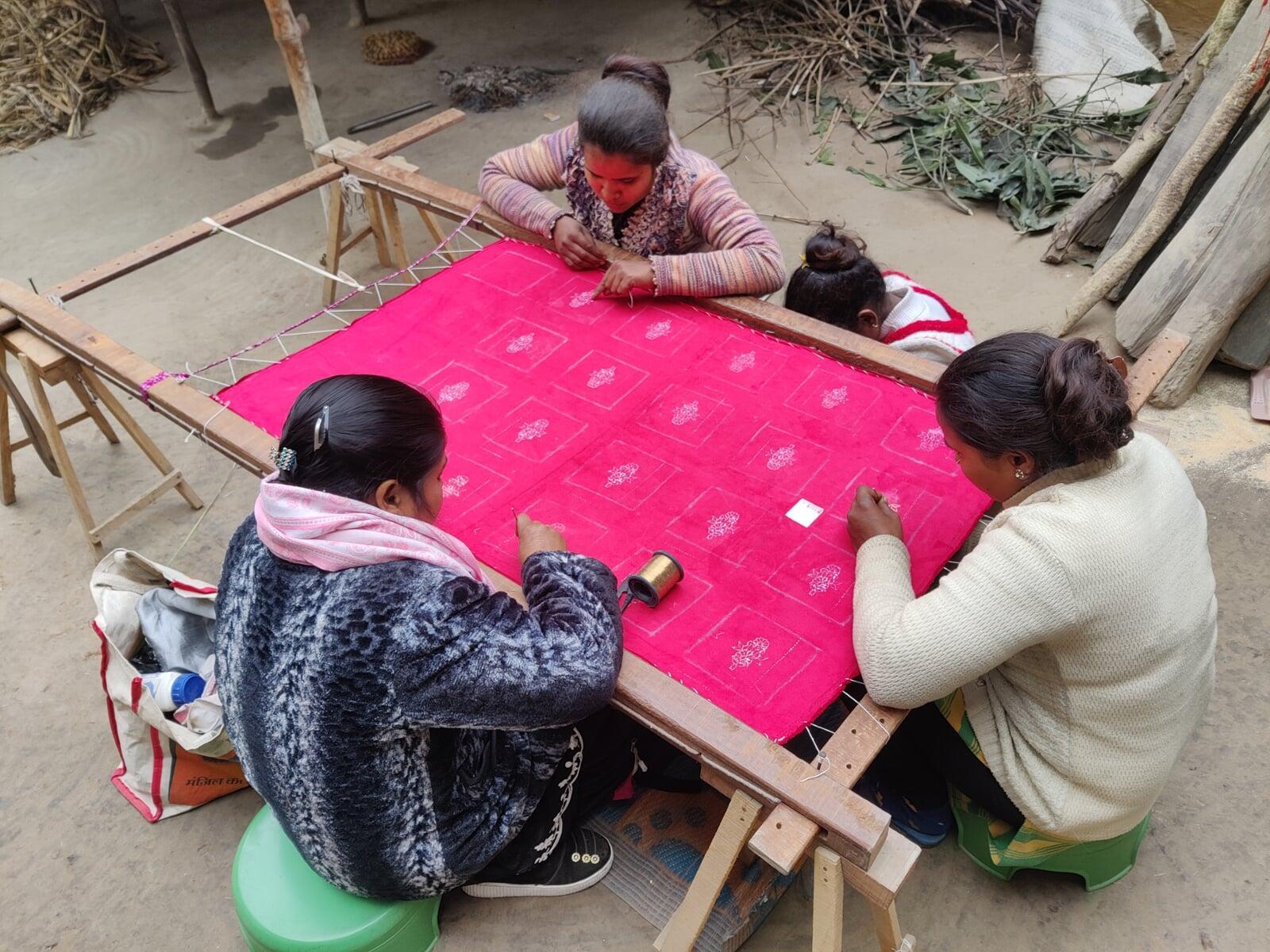
Zardozi embroidery is a magnificent art form that dates back centuries, combining intricate designs with luxurious materials like gold and silver threads, beads, and sequins. This craft has remained a symbol of opulence and artistry, but its magic lies in the dedication and skill of the artisans who bring these designs to life. Let’s take a journey behind the scenes to understand how Zardozi embroidery is made and how this craft intertwines with modern initiatives such as the crochet movement in India and sustainable livelihoods for women.
The Process of Zardozi Embroidery
Zardozi is a painstakingly detailed craft that involves multiple stages:
- Designing the Pattern
Every piece of Zardozi begins with a meticulous design. Artisans sketch patterns on tracing sheets, often inspired by nature, architecture, or traditional motifs. This stage parallels the design process for handcrafted crochet products, which similarly draw from a mix of heritage and innovation. - Preparing the Fabric
The fabric, typically silk, velvet, or satin, is stretched over a wooden frame called an adda. This frame ensures the material remains taut during the embroidery process. The design is then transferred onto the fabric using chalk or stencil techniques. - Stitching the Base
Artisans use a hooked needle, or ari, to apply metallic threads onto the fabric, following the design outline. Gold or silver-coated wires, beads, and stones are sewn into the base, creating intricate, three-dimensional patterns. This delicate handwork mirrors the attention to detail in crochet skill-building programs, where artisans are trained to create complex designs. - Adding the Embellishments
The final step involves adding embellishments like pearls, sequins, and colored threads, giving Zardozi its signature opulent look. This phase highlights the skill and patience of artisans, many of whom are women supported by livelihood programs for women and self-help groups for women artisans.
Empowering Artisans Through Craft
The resurgence of Zardozi embroidery owes much to initiatives focused on women empowerment programs. Similar to the crochet movement in India, these programs emphasize:
- Sustainable Livelihoods for Women: Artisans are provided with training and tools to refine their skills and access better income opportunities.
- Market Linkages for Artisans: Connecting artisans with markets ensures their work reaches a global audience, enhancing their economic stability.
- Inclusive Growth and Sustainability: Efforts like eco-friendly crafting initiatives align with modern values of sustainability while preserving traditional crafts.
Zardozi and Women Empowerment
Zardozi embroidery has traditionally been a family craft, with knowledge passed down through generations. Today, this art is increasingly practiced by women, who are gaining independence through livelihood enablement in India.
Organizations like Mon Ami Foundation are not only reviving Zardozi but also integrating handmade crochet products into their initiatives, showcasing the synergy between these crafts. By supporting artisans through CSR-funded projects for women, these efforts create lasting impacts in artisan communities.
The Role of Self-Help Groups and CSR
Self-help groups for women artisans play a crucial role in the survival of Zardozi. These groups foster collaboration and resource-sharing, much like crochet skill-building programs. Coupled with corporate social responsibility in India, such initiatives amplify the visibility and market reach of artisans.
Sustainability and Innovation in Craft
Zardozi, like crochet, is evolving to meet the demands of modern consumers. Sustainable crafting initiatives ensure that artisans use eco-friendly materials without compromising on quality or artistry. These programs not only preserve the environment but also secure sustainable livelihoods for women.
Bringing Zardozi to the Global Stage
Zardozi embroidery is finding its way into global markets, much like the rising popularity of handcrafted crochet products. With strategic partnerships and innovative designs, artisans are expanding their reach, supported by initiatives like the Mon Ami Foundation crochet projects.
